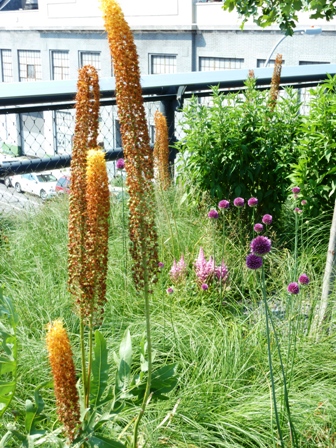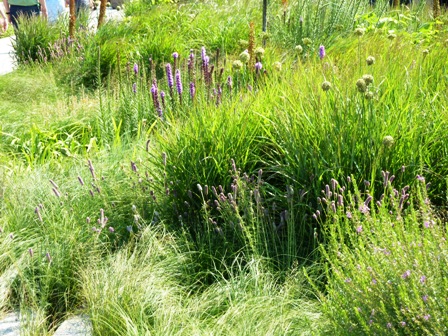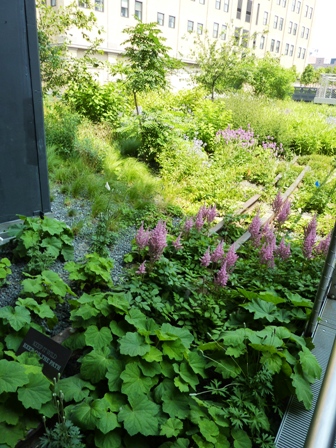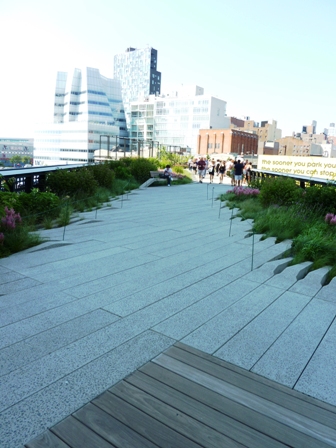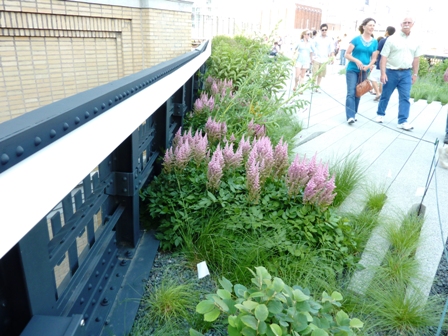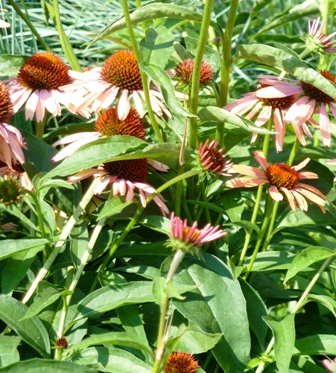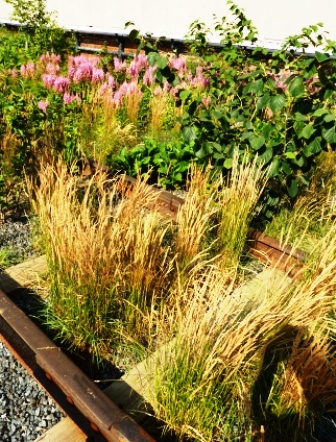Visiting the High Line is one of those magical experiences where once you taste it, you’ll want to go back for more. Several flights of stairs above the ground, designed on old railroad tracks (in operation from 1934-1980 ) with the buildings of Manhattan and the Hudson River as a backdrop, the High Line is paradoxically both a soothing and extraordinarily stimulating public park.
It runs from Gansevoort Street in the Meatpacking District to 20th Street, between 10th and 11th Avenues. When Section 2 of the park is completed in 2011, it will be a 1.45-mile-long elevated rail structure running from Gansevoort Street to 34th Street on Manhattan’s West Side.
The garden is designed with a large number of native plants. When you get to the top of the stairs, you feel like you’re entering a prairie or meadow. “The High Line’s planting design is inspired by the self-seeded landscape that grew on the out-of-use elevated rail tracks during the 25 years after trains stopped running.” (quoted from the High Line’s website)
The High Line is also a green roof. In the Four Day Green Roof Boot Camp which I took (and highly recommend), we discussed whether or not it met the requirements to be considered a green roof. The answer given by the instructor was a big ‘yes’.
What I love most about this jewel of a garden is that it has become a meeting place for folks from NYC, surrounding areas, and all over the world. It’s a public space that personifies what gardening professionals call ‘People and Plants’ – the effect that plants have on people.
The gardens were designed by Piet Oudolf, about whom I’ve written several articles at Gardening Gone Wild. As always, Piet’s selection and planting of specimens was done with discipline and rigor. Walking through block after block of gardens, it’s easy to think that his plant palette is minimalistic. But it isn’t. Check out the plant list. It consists of 210 species of perennials, grasses, shrubs and trees that he selected, in part, for their sustainability and hardiness. The gardens also incorporate many of the species that originally grew on the High Line’s rail bed. Although Piet doesn’t consider himself a colorist, his judicious placement of pinks, purples, magenta and soft white blooms dotted with orange (in June) suggests a well thought out and executed choice of color.
Seeing the specimens planted between the railroad tracks is a good reminder of how any type of garden has the potential of giving birth in a ‘yet thought of place’ – an inspiration for gardeners to dare create a garden ‘outside of the box’.

